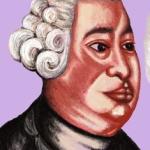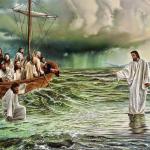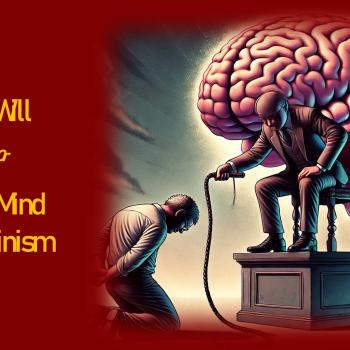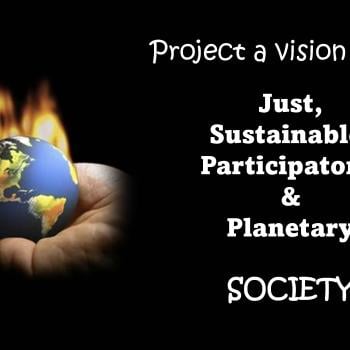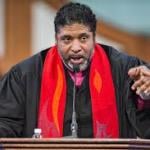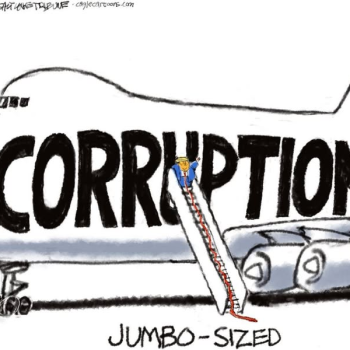Is Special Divine Action miraculous?
Patheos ST 4149 Miracles 9
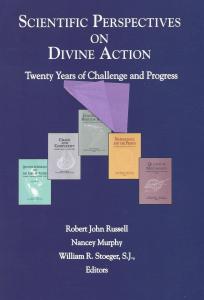
From 1987 through 2002, I worked with colleagues on the Divine Action Project (DAP). This project was co-hosted by the Vatican Observatory in Rome and by the Center for Theology and the Natural Sciences (CTNS) in Berkeley. We asked: is special divine action miraculous? We answered: no, not necessarily.
DAP question-askers included astronomers, physicists, and biologists along with Thomistic philosophers, Whiteheadian philosophers, systematic theologians, and ethicists. Together we represented Roman Catholicism, Protestantism, Russian Orthodoxy, and atheism.
Saint John Paul II, the pope during that era, was intensely interested in the interaction between Christian theology and natural science. At each DAP meeting in Rome, the pontiff greeted us warmly and encouraged our work. To initiate the project, the Holy Father wrote a most insightful foreword to the one volume of our research writings, Physics, Philosophy, and Theology: A Common Quest for Understanding (R. J. Russell 1988).
Here’s what’s important for this Patheos series on miracles: God acts in nature’s world providentially but not necessarily in an interventionist or miraculous way.
So, we tendered the notion that a miracle might not be an intervention into natural processes. We tried to avoid the darkness cast by David Hume’s long shadow. Since Hume’s denial of miracles in the 18th century, theologians have felt compelled to look for gaps in nature’s closed causal continuum wherein God could slip in special action (Tracy 2001, 237). But, according to our DAP scholars, no gaps in nature’s laws are needed to account for God’s providential action.
Notice how open theist Thomas Jay Oord defines miracle so as to avoid entanglement with the laws of nature. “… a miracle is an unusual and good event that occurs through God’s special action in relation to creation” (Oord 2019, 196). We can expect contemporary theologians to avoid violating laws of nature like we can expect our cat to avoid the water in the bathtub.
Where does that leave miracles? Miracles are certainly examples of special divine action. But are miracles natural? Supernatural? Supranatural?
From Newton’s Determinism to Copenhagen’s Indeterminism
Recall from our previous post how David Hume (1711-1776) accepted as dogma the worldview derived from Sir Isaac Newton (1643-1727). This is the mechanistic worldview in which the laws of nature function like the gears in a Swiss watch. It’s the clockwork universe. Everything is determined by natural law. There is no room in such a cosmic clockwork for an extra gear or an unpredictable movement. There is no gap within which God can intervene with a miracle.
But a century ago, Newton’s mechanistic model was supplemented with a new understanding of physical reality, namely, quantum mechanics. At the most fundamental level of physical reality—at the level of sub-atomic physics—Newton’s laws of motion do not apply. Repeated experiments demonstrate how electrons and photons do not behave like gears in a Swiss watch. They are unpredictable, at least as individual events. Niels Bohr (1885-1962) and his Copenhagen colleagues found they had to appeal to indeterminism to describe sub-atomic quantum mechanics.
Suddenly, David Hume’s worldview with its closed causal nexus of natural laws lost its boogie-man power to frighten theologians. Even though quantum physics does not open up gaps in natural law, to be sure, looking at nature through the lenses of the new indeterminism nicely accommodates non-interventionist divine action.[1]
Robert John Russell’s non-interventionist objective divine action theory
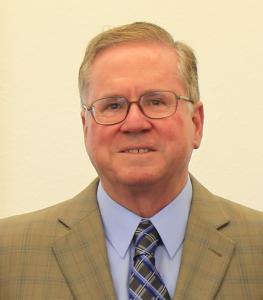
Right there, where the behavior of sub-atomic particles is underdetermined by past causes, God can act without breaking a law of nature. God can act in the physical world without intervening within the very world that God has created and continues to create.
This is the position developed by Robert John Russell during the course of DAP. Russell calls his theory NIODA, Non-Interventionist Objective Divine Action. And, because atoms are everywhere, God’s purposeful action at the sub-atomic level ramifies throughout the creation. There is no event that you and I experience that is immune from God’s gracious providence.
“God has created a universe ex nihilo such that some natural processes at the quantum level are insufficiently determined by prior natural events. One could say that nature is ‘naturally’ indeterministic. Thus God does not suspend natural causality but creates and maintains it as ontologically indeterministic. God does not violate the laws of quantum physics but acts in accordance with them. In essence, God creates the universe such that quantum events occur without sufficient natural causes and acts within these natural processes and together with natural causes to bring them about” (R. J. Russell, Divine Action and Quantum Mechanics 2001, 295).
Russell names his divine action theory NIODA.
“I call this type of divine action non-interventionist view of objective special providence or non-interventionist objective divine action (NIODA)” (R. J. Russell, Cosmology from Alpha to Omega: The Creative Mutual Interaction of Theology and Science 2008, 117).
Unlike Hume, Russell’s theological account of divine action in nature’s world avoids any conflict with the scientific account of physical causality.
“NIODA in no way runs into conflict with science since it bases its philosophical interpretation of the processes of nature in the theories of the natural sciences” (R. J. Russell, Cosmology from Alpha to Omega: The Creative Mutual Interaction of Theology and Science 2008, 140).
What we need to note here is that Russell has provided us with a sound account of divine action that avoids interventionism whether miraculous or non-miraculous. “NIODA is a distinct category from that of miracle,” he says. Russell has identified God’s providential care in terms of “special acts of God that are objective but not miraculous” (R. J. Russell, Cosmology from Alpha to Omega: The Creative Mutual Interaction of Theology and Science 2008, 128-129). It is important to note that Bob Russell does not appeal to quantum indeterminacy to explain miracles.
Does this mean Russell denies miracles? By no means. For Biologos Russell has penned, “Miracles and Science: A Third Way.” What Russell has demonstrated is the plausibility for understanding SDA in a non-interventionist form. Miracles belong in another category. That’s all.
Before we leave Russell, let me share with you a limerick I wrote for Bob’s retirement in 2022.
Quantum mechanics makes physics indeterminist,
Rendering NIODA objectivist but not classicist.
Newton’s world is very odd,
’cause there’s no room for God.
So, Bob Russell’s a non-interventionist non-fundamentalist.
How are miracles one form of Special Divine Action?
So, we ask: do miracles count as one form of special divine action?[2] Does SDA come in two forms: in a non-interventionist non-miraculous form and an interventionist miraculous form? If so, what’s the difference?
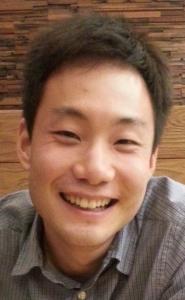
This is one perceptive question posed by Donghwi Kim. As I mentioned in an earlier column post, Donghwi is writing what I deem to be a brilliant doctoral dissertation on this topic, Miracles Reconsidered: A Fresh Assessment from Philosophy, Science, and Theology (Kim 2023). Here is Kim’s definition.
A miracle “is a unique occurrence that happens due to divine will, which is a temporary and inexplicable exceptionto the ordinary course of nature for the purpose of showing that God has acted in history and nature”(Kim, 2023, 432).
Almost Doctor Kim alerts us to the work of DAP philosophical theologian Thomas Tracy. Like St. Thomas Aquinas before him, Thomas Tracy identifies two forms of divine action: direct and indirect. God’s direct action establishes the world in being. That is, God creates our world ex nihilo, out of nothing. But God also engages in continuing creation, in creatio continua. Here in the world’s everyday activities, God works indirectly through natural processes.
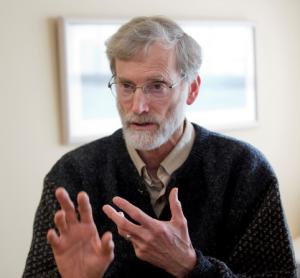
God’s indirect action applies to miracles, according to Tracy. Consider the miracle of crossing the Red Sea (Sea of Reeds) in Exodus when Moses led the Israelites out of Egypt. Here is Tracy’s account.
“When a strong east wind pushes back the water in the shallows of the Sea of Reeds and allows the fleeing Jews to escape from their pursuers, we can say quite straightforwardly that this wind was ‘sent by God’” (Tracy 2001, 241).[3]
The east wind is natural. Deliverance of the escaping Hebrews is no less an act of divine grace because the wind is natural.
Does the parting of the Red Sea by a natural cause count as a miracle? You betcha it does.
Should we add the supranatural to the natural?
Kim is almost, but not quite, happy with Tracy’s account. “I would argue in the same direction of Tracy, but slightly differently,” comments Kim.
“SDA miracles can be equally understood as acts performed by God at a particular space and time, but a miracle as an act distinct from God’s normal activity of the universe should be differentiated from SDA in that, for an observer, a miracle is an objective event that would appear as an intervention, far beyond the natural processes” (Kim 2023, 157).
Kim does not require that a miracle violate a law of nature, to be sure. Yet reducing a miracle to indirect natural causation is unsatisfactory for Kim. So Kim adds a component to a miracle beyond ordinary SDA. Kim requires that the miracle appear to be more than what nature alone can deliver. He adds a supranatural—above natural process—component make clear that the event is a special divine act.
In sum, Kim thinks of “miracles as supra-natural and not contra-natural”(Kim, 2023, 434).
What’s the difference between natural, supernatural, and supranatural?
A century after Hume the French scholar, Ernest Renan, published his life of Jesus, Vie de Jesus (1863). Renan took no interest in miracles because he rejected the very concept of the supernatural. “We reject the supernatural for the same reason that we reject the existence of centaurs and hoppogriffes; and this reason is, that nobody has ever seen them”(Renan, xi-xii). It looks like we need to get more precise on the relationship of the natural to the supernatural or even the supranatural.
Donghwi Kim likes Paul Tillich on this matter. Tillich clarifies so many issues to the benefit of every theologian. Does Tillich help here?
Naturalism is the belief that nature and only nature exists. Naturalists don’t like supernaturalists. Why? Because supernaturalists posit the existence of a second reality. That second reality is usually a spiritual substance thought to be more fundamental than the physical. Supernaturalists are typically substance dualists. Miracles occur, allegedly, when the supernatural intervenes in the natural. Miracles are supernatural events that are contra-natural, according to supernaturalists.
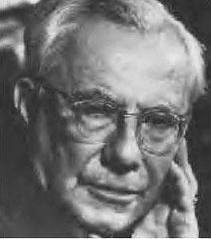
Tillich avoids both naturalists and supernaturalists. There is only one reality, according to Tillich. But that one reality is multidimensional. Does the one reality include what transcends nature? Yes.
The problem with supernaturalism, to repeat, is that it posits two realities, one physical and one spiritual. And God is placed in the spiritual. But, says Tillich, this fails to understand that the divine is not separated from physical nature. Rather, “to call God transcendent…does not mean that one must establish a superworld of divine objects. It does mean that, within itself, the finite world points beyond itself. In other words, it is self-transcendent” (Tillich 1951-1963, 2:7.).[4]
Does the term, supranmatural, help us here? The term, supranatural, is employed by many Tillich disciples to refer God as transcendent yet not remote.
Kim says that ‘supranatural’ (übernatürlich in German) is more inclusive than ‘supernatural’ in that “it does not simply mean ‘above’ (or ‘beyond’) nature but includes…what is natural” (Kim 2023, 4,n.10). To my reading, Kim wants to add supranatural to what is natural to avoid appealing to what is supernatural. This is the way Kim distinguishes a miracle from other SDAs.[5]
So, I ask: is Kim a compatibilist or incompatibilist?
God works in, with, and under natural processes
As we move step-by-step from non-interventionist divine action in the direction of miraculous divine action, we must entertain the notion of compatibilism. Might God’s special action in nature’s world be compatible with nature’s own laws and processes?
One DAP biologist and theologian, the late Arthur Peacocke, would answer affirmatively. Peacocke borrows the Reformation Lutheran doctrine of the real presence in the Sacrament of the Altar, where Jesus’ body and blood are present in, with, and under the bread and the wine. Peacocke applies this sacramental formula to SDA in general. For Peacocke, God acts in, with, and under natural processes without abrogating those natural processes.
“Particular events might occur in the world and be what they are because God intends them to be so, without at any point any contravention of the laws of physics, biology, psychology, sociology, or whatever is the pertinent science for the level of description in question” (Peacocke, God’s Interaction wiht the World: The Implications of Deterministic Chaos and of Interconnected and Interdependent Complexity 1995, 283).
With Peacock might we ask: are God’s miracles compatible with natural processes? Or must we like Hume demand that a miracle abrogate one or more natural law? Must God’s action be incompatible with nature’s processes?
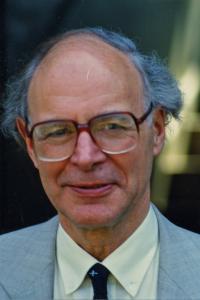
To be consistent, it seems to me, Peacocke would affirm that all divine action is continuous with natural processes. He would not add Kim’s requirement that a special event include a supranatural component. Peacock sees the issue but stops short of taking a definitive stand.
“Can we rule out the possibility that God might intervene, in the popular sense of the word, to bring about events for which there can never be a naturalistic interpretation?….We may well conclude from the historical record, given the growing ability of the sciences to give intelligible naturalistic explanations of an increasingly wide range of phenomena, that there are in the end no events that pass through this sieve, but considerations of this possibility can never be entirely precluded” (Peacocke, Theology for a Scientific Age 1993, 183).
Peacocke, like Tracy, grants that SDA works in concert with natural laws and processes. But, it’s not completely clear that a miracle is simply one more special divine act. Kim wants to add a supranatural component to a miracle. Peacock wants to avoid adding something supranatural, but he stops short of precluding it.
Conclusion
Kim might not be satisfied with the view that God works exclusively “in, with, and under” natural processes. Kim is an incompatibilist. That is, in the case of a miracle, divine action is incompatible with nature’s action. At least on some occasions. “My theory of miracle thus tends to take an incompatibilist position,” writes Kim. “Miracles, are, I believe, events that are performed beyond (or transcending) the normal course of nature, in terms of the correlation between miraculous divine action and the natural order”(Kim, 2023,l 433).
Regarding special divine action in general, I belong in the compatibilist camp. Like Tracy and Peacocke, I affirm that God works compatibly “in, with, and under” natural laws and natural processes. Yet, there are special moments when the new creation breaks into the old creation with dramatic impact. Even if such break-ins seem like miracles to us, they proleptically anticipate what will be new laws of nature eschatologically considered.
What’s coming?
Patheos ST 4141 How to see a miracle? Miracles 1
Patheos ST 4142 Two Healing Miracles for Sainthood. Miracles 2
Patheos ST 4143 Hume on Miracles. Miracles 3
Patheos ST 4144 Is Special Divine Action miraculous? Miracles 4
Patheos ST 4145 Jesus’ Nature Miracles. Miracles 5
Patheos ST 4146 Is resurrection the ultimate miracle? Miracles 6
Patheos ST 4147 The proleptic power of new creation. Miracles 7
Patheos ST 4148 Paul Lange on Miracles. Miracles 8
Patheos ST 4149 Robert John Russell on Hume. Miracles 9
Patheos ST 4149 C.S. Lewis on Miracles. Miracles 10
▓
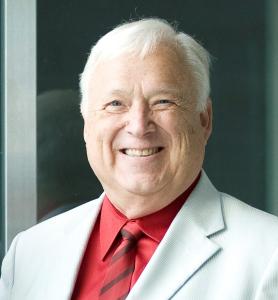
For Patheos, Ted Peters posts articles and notices in the field of Public Theology. He is a Lutheran pastor and emeritus professor at the Graduate Theological Union. He co-edits the journal, Theology and Science, with Robert John Russell on behalf of the Center for Theology and the Natural Sciences, in Berkeley, California, USA. His single volume systematic theology, God—The World’s Future, is now in the 3rd edition. He has also authored God as Trinity plus Sin: Radical Evil in Soul and Society as well as Sin Boldly: Justifying Faith for Fragile and Broken Souls. See his website: TedsTimelyTake.com.
Watch for his new 2023 book, The Voice of Public Theology, published by ATF Press.
▓
Notes
[1] Roger Olson asks, “Can a modern scientist believe in God and miracles?” He answers affirmatively. “Now, obviously, readers are going to want names. Here are some. Look them up. Ian Hutchinson of MIT, Ard Louis of Oxford University, Denis Alexander of Cambridge University, Francis Collins of the Genome Project and National Institutes of Health, John Polkinghorne of Cambridge University (retired/deceased).”[2] Writing for BioLogos, Sarah Lane Richie helps us distinguish general from special divine action. “In academic discussions of divine action, it is common to begin with the supposed distinction between “general” and “special” divine action. General divine action, or providence, is taken to indicate God’s initial act of creation ex nihilo, together with the assumption that God is undergirding and preserving the natural laws that God has set in motion, as it were. This is in marked contrast to “special” divine action, which is depicted as the specific actions God undertakes—either in response to human needs and prayers, or to bring about some divinely intended purpose. Miracles would fall into this category as well.”
[3] Perhaps the miracle is in the timing. Donghwi Kim finds the work of Colin J. Hymphreys illuminating here. The east wind creating dry land within the Red Sea is not miraculous. It’s natural. But the east wind blew at just the exact time the Israelites needed to escape from the Egyptian army. “What happens in the Exodus story is you have event after event after event which occur at just the right time” (Kim 2023, cited p.200).
[4] Patheos columnist James McGrath examines divine action in light of the propensity within science to perceive that nature transcends itself. “What strikes me again and again is how the universe seems to contain such order, beauty and transcendence that it seems to point beyond itself, and such regularity, chaos, law, and intelligibility that it seems to require explanation in scientific terms. For me, it is the desire to do justice to both these aspects of our existence, the simultaneously explicability and mysteriousness of the universe, that keeps me exploring both science and spirituality, both reason and religion, as ways to get to know it and myself better.”
[5] This may not be the way Tillich would proceed. For Tillich a miracle is a sign-event. The miracle points to transcendent reality, to be sure. But it does not exceed let alone violate natural laws or processes. “Miracles cannot be interpreted in terms of a supranatural interference in natural processes” (Tillich 1951-1963, 1.116).
Works Cited
Kim, Donghwi. 2023. Miracles Reconsidered: A Fresh Assessment from Philosophy, Science, and Theology. Graduate Theological Union Ph.D. dissertation: unpublished.
Oord, Thomas Jay. 2019. The Uncontrollig Love of God. Grasmere ID: SacraSage Press.
Peacocke, Arthur. 1995. “God’s Interaction wiht the World: The Implications of Deterministic Chaos and of Interconnected and Interdependent Complexity.” In Chaos and Complexity: Scientific Perspectives on Divine Action, by Nancey Murphy, and Arthur Peacocke, eds Robert John Russell, 263-288. Vatica City State: Vatican Observatory Publications.
—. 1993. Theology for a Scientific Age. Minneapolis MN: Fortress Press ISBN 0-8008-2759-8.
Renan, Ernest, 1890. The Life of Jesus. London: Mathieson and Company.
Russell, Robert John. 2008. Cosmology from Alpha to Omega: The Creative Mutual Interaction of Theology and Science. Minneapolis MN: Fortress Press ISBN 978-0-8006-6273-8.
Russell, Robert John. 2001. “Divine Action and Quantum Mechanics.” In Quantum Mechanics: Scientific Perspectives on Divine Action, by Philip Clayton, Kirk Wegter-McNelly, and John Polkinghorne, eds Robert John Russell, 293-328. Vatican City State: Vatican Observatory Publications.
Russell, Robert John, William R Stoeger, and George V Coyne, eds. 1988. Physics, Philosophy, and Theology. Vatican City State: Vatican Observatory.
Tillich, Paul. 1951-1963. Systematic Theology. 1st. 3 Volumes: Chicago: University of Chicago Press.
Tracy, Thomas. 2001. “Creation, Providence, and Quantum Chance.” In Quantum Mechanics: Scientific Perspectives on Divine Action, by Philip Clayton, Kirk Wegter-McNelly, and John Polkiknghorne, eds Robert John Russell, 235-258. Vatican City State: Vatican Observatory Publications.



